
The
opportunity afforded by Google Books to quote extracts
from books on their site has been taken here, so that
the text below contains some original text as well as
summaries - the summaries are given in italics. Links
are provided to the relevant parishes.
The old photographs of Banff and
Macduff are from the Detroit Publishing Company's Views
of Landscape and Architecture in Scotland - see thumbnails
on Library of Congress site here.
Map for Boat of Brig based on OS Lower Strathspey Tourist
Map, published 1921. Aberlour and Inveraven maps based
on quarter-inch OS map for eastern Highlands, 1923.
With thanks to Ordnance Survey.
Additional information about parishes
can be found on the Vision
of Britain site and on Scotland's
Places.
Other
Resources
Records
of the County of Banff, 1660-1760, one hundred years of
county government, James Grant, Aberdeen University Studies
No.87, 1922. See
chapter
3 for a very full account of roads and bridges between
1710 and 1760.
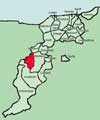 Aberlour Aberlour
OSA
V4,
P64
No mention of roads.
NSA
When the Spey flooded in 1829 the dry stone arches which
formed the eastern approach to the metal bridge of Craig
Ellachie (to be noticed hereafter,) were entirely swept
away, leaving only a few yards of mason work to be a precarious
support to that end of the arch.
Lime for use as manure is easily available at Mortlach
and Glenrinnes.
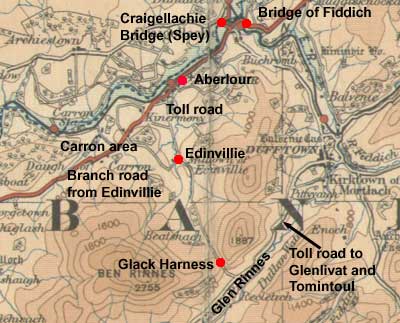 Parochial
Economy Parochial
Economy
Means of Communication. - The parish has enjoyed
the advantage of a sub-post-office to Mortlach, ever since
the year 1803; and in addition to this, a first-office
was established, some years ago, at Craig Ellachie, which
now communicates daily with a principal office at Ballindalloch
through Aberlour, and also with the two sub-offices of
Dufftown and Rothes.
A toll-road, built in 1817, runs through the parish
from the bridge of Fiddich towards the hill of Carron;
another was built last year through Glenrinnes from Dufftown
to Glenlivat and Tomintoul.
There is a large whisky distillery at Aberlour, supplied
with barley by local farmers. Two inns in Charlestown
and a few public houses.
Fuel. - Peat. That supplied to the village and
the east of the parish has to be brought some distance.
Miscellaneous Observations.
 |
 |
| Craigellachie
Bridge |
The
approach road |
The
bridge of Craig Ellachie over the Spey, in the east
of the parish, was built in 1815 at a cost of L.8000.
It allows easy access to Elgin and Garmouth, the latter
being the main grain market in the area and where coal
is available. The bridge is of metal and has a span
of 160 feet, and is approached by a deep cutting on
the north side. In its surroundings it has a fine imposing
appearance.
Of possible improvements, it would be beneficial if
a road could be made to Glenrinnes to allow easy access
to limestone and peat for those living in Edenvillie
and near the Spey, and also for the Glenrinnie farmers
to reach market. At present there is only a rough cart
track through Edinville and Glackharnis, near impassable
in winter floods and which (because a road is necessary)
has had a lot of money spent on its maintenance. Fortunately,
a road is now planned near this track that will run
between the Aberlour toll-road, near the manse, over
to the recently made road in Glenrinnes and will have
a branch from Edinvillie towards the Carron district
which will benefit the west side of the parish.
For
further information see Harper
Bridges for details of a suspension bridge built
in 1900.
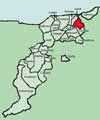 Alvah Alvah
OSA
V4,P393
Picturesque scene at the Craigs of Alvah where a ravine
is crossed by a "magnificent arch."
Until carts started to be used (the minister started
using carts about 1747) peat was carried in creels, and
corn in curracks. Both are no longer used.
Roads and Bridges. - The principal roads
here are made and maintained by the statute labour, mostly
in kind but sometimes commuted. Bridges are being built,
and more are envisaged when funds can be found. There
are no turnpikes in the district and as the roads are
not busy, are not needed so much as elsewhere.
NSA
The scenery near the Bridge of Alvah (1772) is spectacular.
The bridge forms a majestic arch over the 'rocky and precipitous
sides of a chasm', 55 feet above the Doveran.
 |
| The above map shows
places mentioned in the commentary on the charter
in the Statistical Account, as well as the likely
course of the road - see also 6" map, Banff
sheet
X (NLS). It is not clear if it was local or
gave access to places like Turriff to the south
or Banff. The placenames containing "ford"
are indicative of routes, albeit local, and "slack"
was an old word that implied a pass or gap through
a hill. Based on OS half-inch map, Aberdeen and
Banff, 1912. With thanks to OS. |
Civil
History. Documents, Transactions, Etc.-There is a
long discussion of a charter of donation dated 1314 -
see here.
In a description of the boundaries of the land grant,
a road is mentioned 'ascendendo rivulem statent de lie
Claretwell usque ad viam ascendendo slakmethy et
inde descendendo per viam usque ad slacklethy descendendo
ad fontem et rivulem ejusdem usque ad redbank'.
In determining the boundaries he states: 'A little farther
up lies Knokkne, a place which still retains its ancient
name. From this we are directed to ascend the stream which
flows from Claret-well, until we come to the road ascending
to Slakmethy.
The Claret-well is still known by the same name, and the
stream which flows from it is only the upper end of the
Meirburn - circumstances which confirm the opinion given
in regard to the previously mentioned localities. The
road ascending southward to Slackmethy, (although this
name is now forgotten), can be no other than the road
ascending to the place now called Berryhillocks, and the
descent from thence to Slackmethy must be the continuation
of the same slack to the place now called Kemplemire.'
The charter also mentions a place called Scurryford of
which he says: 'Still farther up is Scurryfurd, which
is probably the place where an old road now crosses the
marshy hollow north-west of Bythestown, near the Slacks.'
These places are noted on the map.
Mills.- Nearly 40 mills in the parish: 31 thrashing-mills,
6 meal-mills, 1 malt-mill and 1 lint-mill.
Means of Communication, Etc. - The nearest market-town
is Banff. There are post-offices at Banff, Abercherder
and Turiff.
The parish has the following roads:
| Turnpike
from Banff to Huntly |
4
½ |
| A
branch from this at the Slacks of Tipperty towards
Forglen parish |
4 |
| New
turnpike from Burreldales towards Forglen House |
1 |
| Commutation
roads |
|
|
Portsoy
to Turiff |
2
½ |
|
Banff
to Turriff, by Sandlaw, Auchinbadie, &c. |
4
¾ |
|
Branch
to the Henford |
¾ |
|
Banff
to Turriff by Inverichny and Dunlugas |
4 |
|
Other
commutation roads |
5 |
Except for four and a half miles, all these roads have
been made in the last 40 years, as have 16 bridges at
a cost of L.730. At the time of the last Account the only
bridges were at Blacktown, Alvah and Denmill. There are
no public coaches here although unsuccessful attempts
have been made to run a coach and a car on the Huntly
road.
Inns. One.
Fuel. Peats are used in the inland parts of
the parish; coal can be obtained in Banff.
1837, revised 1842
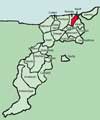 Banff Banff
 |
| General
view of Banff |
OSA
V20,
P319
Mention of the bridges of Alvah and of Banff.
About three miles from Duff house, where the river is
considerably narrowed by the lofty and impending craigs
of Alvah, a majestic arch is thrown across, which is highly
picturesque.
Roads and Bridges. Post road in good condition
but the country roads are less good. Turnpikes will benefit
the country. The proposed line of new road from Banff
to Turiff will not be much shorter in distance but will
run through some fine scenery.
The former bridge over the Doveran was swept away by
floods in 1768; another has now been built by the Government.
Details of the extensive trade carried on through the
port.
Markets.
Friday
market and 3 annual fairs.
Post-Office.Banff
has a post-office. It is hoped that the mail will arrive
earlier from Edinburgh.
Comparative Statement
1748. A four-wheeled carriage was a luxury seldom enjoyed,
unless by the nobility. A gentleman and his wife generally
rode together on the same horse.
1798. Post-chaises are now in general use. Several private
gentlemen keep their carriages.
NSA
The lower part of the town is sometimes flooded - in
1829, 3 horses on the mail coach were drowned in trying
to pass through the Market-square.
Mention in 1647 of ferryboat and in 1698 of a party of
"Egyptians", i.e. gypsies (page 24). Details
of the extensive shipping trade with the continent and
with London and other places in the south. Since 1826
live cattle have been exported to London; other animals
are now sent.
Parochial Economy
Town. - The streets are quite wide and straight.
The High Street, Castle Road, and one near the battery
form a continuous line for over half a mile. A new street
was to have ran from Huntly Road to St Catherine Street
but some of the proprietors could not agree on the proposed
line. A gas-work was set up in 1831.
Means of Communication. - There is a post-office
in Banff with 3 sub-offices: Aberchirder on the Huntly
road, and New Sligo and Brucklaw on the Peterhead road.
Macduff has a penny post office. The mail goes each day
to Aberdeen, Inverness and Peterhead; Huntly and Fraserburgh
have a service three times a week.
The
Aberdeen - Inverness turnpike and the turnpike from
the harbour towards Alvah each run through the parish
for about 2 1/2 miles.
Every
day stage-coaches run to Aberdeen and Elgin, the mail
coach to Peterhead and an open car to Huntly. Twice
a week there is a coach to and from Keith. Occasionally
other coaches have run. The mails are carried by gigs
or foot-posts, as well as by the Peterhead mail-coach.
There is a bridge over the Doveran near the town
of 7 arches built by the government in 1779. There is
also a bridge over the burn of Boyndie. Lower down this
burn there is another bridge on the old road. The turnpikes
are bordered by fences or hedges.
Fairs.- Only one of the four fairs is of any
size. No cattle markets.
Inns and Alehouses.Thirty eight.
Fuel.- Coal; along with some peat.
Among the differences since the last Account are
the exporting of live cattle, gas lighting, and the
formation of turnpike roads.
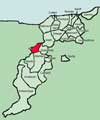 Boharm Boharm
OSA
V17, p358
 The
charter of Moray mentions a bridge over the Spey at
this location (Boat of Brig) - see 25" map, Banff
XIII.9. It is thought to have been of timber and
the foundation of the southern pier can still be seen.
There was an associated chapel of St Nicholas - "Ad
receptionem Pauperum transeuntium." Both are mentioned
in 1232 but little else is known of them. The
charter of Moray mentions a bridge over the Spey at
this location (Boat of Brig) - see 25" map, Banff
XIII.9. It is thought to have been of timber and
the foundation of the southern pier can still be seen.
There was an associated chapel of St Nicholas - "Ad
receptionem Pauperum transeuntium." Both are mentioned
in 1232 but little else is known of them.
The location is thought suitable for building a stone
bridge at a cost of L3000 Sterling. He argues that if
a road was made from the south end of Fochabers to this
bridge it would give an easier, though longer, route
between Cullen, Fochabers and Elgin.
NSA
Records and tradition tell of a very early bridge
(NMRS
record) over the Spey, near the confluence of the
Orchil. It was of timber and suitable for pedestrians
and horses. At its location the water is very deep on
the eastern side but it quickly becomes shallow and
tradition suggests that the deep water would have been
spanned by large lengths of timber while shorter ones
would serve to cross the shallower water, presumably
supported by pillars. It would be easy to repair if
damaged in a flood or suffered natural decay.
As the only bridge across the Spey for centuries
it was very important for the north. It has been thought
to have first been built by the Romans under Severus,
and existed at the time of the Reformation. In fact,
when the associated religious establishment was closed
this may have led to the neglect of the bridge until
it finally decayed or was swept away in a flood. Nothing
now remains.
A ferry-boat was established and the crossing point
became known as "the boat of bridge" while
farm names retained a reference to the former bridge
e.g. Upper Briglands. Just a few years ago a suspension
bridge has been erected at a cost of L.3500, along with
a toll house, by the Earl of Seafield and others. It
comes under the Banffshire Turnpike Act and a moderate
pontage is exacted.
Although the importance of the crossing is less since
the bridges at Fochabers and Craigellachie were built,
it is still very convenient to this neighbourhood.
Beside the bridge there was a religious establishment
called " the Hospital of St Nicholas at the Bridge
of Spey" and founded in the early 1200's for the
reception of poor travellers. (Some details are given
in the History of the Province of Moray, Lachlan Shaw,
Elgin, 1827, pages 20
and 424.)
Parochial Economy.
The nearest market town is Keith.
A daily post passes through the parish on the route
from Keith to Craigellachie, and there is a sub-office
near the centre.
A good turnpike road leads from Keith to the suspension
bridge and gives access to Elgin, Rothes, Garmach etc.
Another turnpike, the Boharm road, leads off the
Great North Road halfway between Keith and Fochabers
and leads up the valley to near its end where it divides.
One branch leads to Mortlach (effectively Dufftown)
and the other to Aberlour, Grantown etc with a link
to the bridge of Craigellachie. The length of this road
in the parish is 10 miles.
It is in a very bad condition and one of the bridges
was destroyed in the floods of 1829 so that tolls cannot
be exacted on the line. The bridge has not been replaced
owing to a dispute among the trustees - it is hoped
this will be resolved as the road is deteriorating badly
and may end up with the road being completely ruined.
Inns, Etc. - Four, with the usual bad effects.
Fuel. - In the lower part of the parish, turf
and peat is easily available but there is very little
in the middle and higher parts although wood is easily
available. Coal is used by those who can afford it and
is brought from Port-Gordon or Garmach.
1834.
Addenda
5. The deficient bridge, on the Boharm road, has been
replaced by the Earl of Seafield, and, instead of a
temporary wooden bridge over the Fiddich, a very handsome
structure of stone has been erected at an expense of
L.450, supplied by the liberality of the gentlemen in
the neighbourhood. It was opened in the end of last
year. The road has also received some slight repairs,
and is kept passable by the several gentlemen through
whose properties it extends, but it is still in a very
bad state, demanding a thorough repair, so as to permit
tolls again to be raised for its support.
1842.
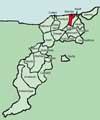 Boindie
V19, P305 Boindie
V19, P305
OSA
Fish taken from Whitehills to Banff and the surrounding
country. No specific mention of roads.
NSA
The word Bouin in Gaelic is understood to signify a stream,
and thus with aa, a ford, gives name to the parish of
Boyne, at which there is a stream and a ford. Probably
our name Boyn, which, in the reign of Robert Bruce, was
spelt Bouyn, has the same origin.
A little beyond this, on the opposite side of the road,
not far from the site of the old mansion-house of Buchragie,
may be traced the huge remains of what may possibly have
been a Roman camp
An episcopal seal was found in a field NE of the manse,
on the line of an old road, and urns were found 30 yards
east of the steading, on farm of Dallachy, below the old
road.
The great Roman road to Burghead is believed to have crossed
by the hill of Barry, near the Knockhill. A hypothesis
is hazarded by some, and maintained on plausible grounds,
that the Knock hill is the Mons Grumpius of Tacitus.
In discussing Minutes of Session records from 1698
- 1706 he mentions an entry that reads " building
an bridge over Dee, at Pittarch."
He gives details of the fishing trade.
Market-Town, Etc. - Banff and Portsoy are the
nearest market and post towns. The only village here is
Whitehills.
The turnpike road from Banff to Portsoy extends above
three miles within this parish from east to west; and
the branch which diverges from it to Keith and Huntly
on the left, extends a distance of about two miles to
the point at which it joins Ordiquhill. These, and the
several county roads pass the streams by which the parish
is bounded by bridges mostly sufficient, at ten separate
points.
Fairs. -A fair for the sale of cattle, &c.
has been lately instituted at Ordens, in the western part
of this parish, appointed to be held eight times in the
year, and promises to be a great accommodation for the
disposal of fed stock in the winter season.
Public-Houses. -Five in Whitehills and three
elsewhere.
Fuel. -Peat.
1839 Revised 1842
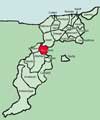 Botriphnie
V10, P187 Botriphnie
V10, P187
OSA
Flax spun here and sold at an annual fair when it is
bought by manufacturers in Keith and Huntly and sent to
Glasgow and Paisley. Linen is also made here and sold
at fairs in Keith and Huntly.
Trade in black cattle and in grain which is shipped from
Garmouth and Buckie to the Forth or supplied to Strathspey,
Strathaven and Badenoch.
Miscellaneous. - Excessive time is spent gathering
peat from the nearby hills; if the coal tax was removed
they could use coal and spend the time in husbandry. The
roads here (statute labour) are better than in the neighbouring
parishes.
(& Vol.18, page 644)
The same Minister (Alexander Angus) has another entry
for the parish in a different volume. In it he talks about
the flax trade and notes the great difficulties arising
from the lack of peat and the time taken to gather it
in. At the time of writing the (disadvantageous) coal
tax had been removed.
There was no inn or ale-house in the parish. An annual
fair was held in February.
NSA
There is also one merchant and innkeeper, who carries
on an extensive trade in butter, eggs, &c . for the
London market.
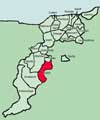 Cabrach Cabrach
OSA
V7, P361
Climate, soil, produce etc. -They have an inexhaustible
moss at their doors, and depend not more for subsistence
on the produce of their fields, than on the profits of
a traffic they carry on in sheep and black cattle.
Agriculture. -The practice of carrying dung
to the fields in creels is wasteful compared to the use
of carts.
NSA
Industry. -Two cattle markets started in 1824,
and are well attended. The development of the parish is
held up by there being few roads and bridges.With so much
waste land here, not enough commutation money can be raised
to make roads. A road which is very necessary for this
district has been made from Rhynie to Mortlach but being
unmetalled is near impassable at times.
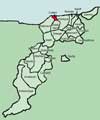 Cullen Cullen
OSA
V12,
P143
The town of Cullen lies on the post-road, which is
in good repair. Post office.
NSA
Means of Communication. - There is a local
post-office in Cullen and the mail goes daily to Aberdeen
and Inverness. One and a half miles of the Banff to
Fochabers turnpike passes through and there is a fine
turnpike, opened in 1836, between Cullen and Keith -
the toll-bar at Cullen raises L150. A stagecoach passes
each day between Elgin and Banff, and carriers go weekly
to Aberdeen and Inverness. Steam-boats call in on their
passages between Inverness and Leith and London.
Fairs and Markets. - Three are held, mostly
for hiring. Weekly grain market in spring.
Inns and Alehouses.- Two inns in the burgh,
one of which is very good and has a posting department.
Three public-houses in the Seatown.
Gas-Light. - Although a Gaslight Company was
established in 1841 and was currently supplying 80 houses,
there is no mention of street lighting.
Fuel. - In the past peat from a nearby moss
was used but coal is easily available and sometimes
peat from the nearby parishes of Rathven and Deskford,
as well as firewood.
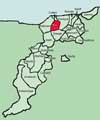 Deskford Deskford
OSA
V4,
P358
Some think there is a Roman station in the parish.
Well frequented quarry of limestone at Craigstown.
Roads. -Two principal roads in the parish. Like
most roads they were made too narrow and have not been
kept in good condition. The nature of the soil makes them
uncomfortable to travel on, especially in winter and wet
weather. Statute labour work is carried out (grudgingly
and carelessly) in spring and autumn. It would probably
be better to raise money along with the rents and employ
workers under good supervision during the summer months.
NSA
Parochial Economy.
Means of Communication, Etc. The nearest market
and post town is Cullen, 4 miles away
It is only recently that a most convenient turnpike road
has been made from Keith to Cullen through Deskford. The
former road took so much of the commutation money to keep
in repair that little was left for improving or making
other roads; this can now go ahead.
Fuel. -Mostly peat and turf. One alehouse.
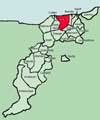 Fordyce Fordyce
OSA
V3,P45
Kirktown and the Castle of Deskford in the old bounds
of this parish, are supposed to have been a Roman station.
In summer 1772, some houses and a bridge were swept away,
both at Fordice and Glassaugh. The same happened in November
1781.
The manufacture of linen seems to have existed in this
parish 300 years ago, for amongst other privileges granted
to the weekly market at Fordice, by charter from the Crown,
that of selling Linteum latum et arctum, is given in 1400.
Miscellaneous: Fuel. - Peat and turf, with
some coal available at Portsoy
There is one coach and two four wheeled chaises belonging
to private persons.
The bridges are few, and not all in repair; they are mostly
constructed and kept up by county assessments. The great
road between Cullen and Banff is in excellent order, but
the other roads are greatly neglected since General Abercrombie's
death. The statute labour is generally exacted ; but by
the lateness of the harvest, the exaction of the three
last days being sometimes hindered, these days are frequently
commuted for a day extraordinary in summer.
He describes the long held custom that continued after
the Reformation of having a market in the churchyard after
Sunday service, though this had gradually been suppressed.
Thirteen ale houses and three inns. At the time of the
Sunday markets, there was a great deal of drinking. The
Minister would allow a certain time for this then ring
the Drunken Bell and visit the ale-houses to remove those
who remained.
NSA
In discussing Gaelic placenames the writer mentions
'Keandrochit', the head or end of the bridge.
Navigation. Coal is landed at Portsoy and a trade is carried
out with the Baltic with vessels bringing bone and returning
with herring. Grain is also shipped.
Parochial Economy.Market-Towns, Etc. -Portsoy
is the chief market-town, with a weekly market. It is
also the post-town. There is a a daily coach between Aberdeen
and Elgin and ample and excellent roads including 14 miles
of turnpike to Banff, Cullen, Keith, and Huntly. Bridges
are good but there are few fences.
Fairs. - Two fairs for cattle and sheep; feeing
is carried out at one.
Inns. - Twenty-four in number.
Fuel. - Coal, and in the vicinity of Knock Hill,
peat.
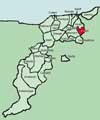 Forglen Forglen
OSA
V14,
P530
Two boats, viz. the boat of Muirish and the boat of
Ashoyle.
Peat is expensive because of the time taken to gather
it in. The people have found using coal to be difficult
as they were not using grates but this is changing. The
removal of the tax on coal has been a great benefit.
NSA
Parochial Economy. - Banff is the nearest market
town and Turiff the post-town. There are about 7 miles
of turnpike road, and three weekly carriers to Aberdeen.
The bridges are good; that over the Deveron on the way
to Turiff was built in 1826 at a cost of L.2503.
Inns. - None
Fuel. - Mostly peat and wood, with some coal
from Banff.
1836
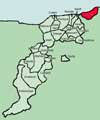 Gamrie Gamrie
OSA
V1, P469
No specific mention of roads.
Peat is becoming scarce and coal has to be used - because
of the oppressive tax when sold beyond the Red Head it
is very expensive.
NSA
 |
| Coast just east of Macduff |
Details
of the fishing trade. The cod, ling, and small fish are
principally sold in the towns on the south and west friths,
the herrings at Stettin, Hamburgh, Russia, Ireland, the
West Indies, &c.
Parochial Economy.
Market-Towns. -Weekly markets at Macduff and Banff.
There is a weekly provision market at Macduff on Tuesday,
and at Banff, in the immediate neighbourhood, on Friday.
Means of Communication. - A stage-coach, which
used to carry the mail, passes from Banff to Peterhead
daily, through the south district of the parish, for upwards
of seven miles. A foot post goes on alternate days on
the old coast road, the whole length of the parish from
Banff to Fraserburgh, through Aberdour and Pitsligo, going
one day and returning the other. A carrier also goes regularly
twice a week from Gardenstown to Banff, and another carrier
goes weekly between Aberdeen and Gardenstown.
The Fraserburgh postman has no house for the delivery
of his letters in the parish, except at Macduff. An application
is about to be made for a post-office at Dubford, which
the postman passes, and where cross roads branch off in
all directions..........
Inns. - There are too many low public-houses
in Macduff and the villages.
Although the peat in the parish is exhausted there
is plenty at Kinbean and Overbrae in Aberdour and King
Edward parishes, where the farmers go in summer when not
much else needs to be done. Coals from the north of England
are landed at Macduff, Gardenstown, and occasionally Cullycan.
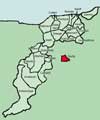 Gartly Gartly
OSA
V11,
P138
No specific mention of roads.
Moss plentiful, which supplies the parish and the town
of Huntly.
NSA
Antiquities. - There are remains of 4 Catholic
chapels and burying grounds at Heathery hillock, Brawlinknows,
Tillythrowie, and Kirkney.
Parochial Economy. - The nearest market-town
is Huntly, 4 miles distant. Some of the byroads are difficult
in winter or after rain but there are turnpike roads,
viz. Huntly to Rhynie and Kinnethmont with 2 coaches each
day, and one and a half miles through the Fouland hills
joining on one side the Huntly to Aberdeen road and on
the other, the road to Insch in the Garioch. These make
access to local market towns easy for the farmers. There
is one inn.
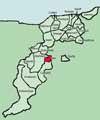 Glass Glass
OSA
V7, P399
The roads, in general, are very bad; for, though the statute
labour is exacted, yet it is very superficially performed;
and, by the swampiness of the ground, the communication
from place to place is little mended. Besides this, Dovern
is frequently impassable, as there is no boat or stone-bridge
over it: Hence many accidents happen. Not fewer than 7
persons have lost their lives in the river within these
30 years past.
NSA
No mention of roads.
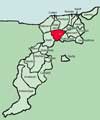 Grange Grange
OSA V9, P550
 |
| Bowmen's
Road, as shown on 6" OS Map (Banffshire, Sheet
XV) |
Antiquities.
- In referring to battles between the Scots and
the Danes in the 9th century he says that one of the
battlefields was on the south side of the Knockhill
"to which there leads a road from the encampments,
over the hill of Silliearn, called to this day, 'The
Bowmens Road.'
In
the middle ages, Grange parish and part of Keith parish
belonged to the abbey of Kinloss, under the name of
Strathisla.
Note:
Cosmo Innes notes in his Lectures on Scotch Legal Antiquities,
p.266,
that a Bowman was a person hired to look after a tenant's
milk cows and their pastures. The road probably indicates
a route to these pastures.
Roads
and bridges.-There are 24 miles of statute labour
roads as follows:
| Banff
to Keith |
7 Miles |
|
| Cullen
and Portsoy to Keith |
4 |
|
| Aberdeen,
Huntly and Rothemay, through Grange, by Newmill,
to Fochabers, &c |
4 |
4 bridges |
| Private
road from Rothemay to Edingight, by Knock, |
3 |
|
| Private
road from Braco-house to Knock |
4 |
|
| Private
road from Berryhillock to the house of Edingight |
2 |
|
On the Aberdeen road there are 4 good bridges, two
built last year over dangerous streams.
There is also a bridge over the Isla, near the church,
dating from 1699 when an Alexander Christie, who lived
in Cantley funded its building to allow people from Cantley
to reach the church. As it was not wide enough for carts,
it was widened in 1783 but this work was not done properly
and the new section is in danger of going to ruin. It
would have been better if the old bridge, which was not
on a public road and was adequate for its purpose had
been repaired by a subscription, and the money (from a
vacant stipend) included in a fund for a new bridge over
the Isla where the public roads from Banff, Cullen, Portsoy,
Keith, &c. all meet and cross.
The roads are very bad: the statute labour is done
too late in the year when the weather is bad and the days
short. Unless proper materials are at hand, earth and
mud are just thrown into the middle of the roads which
makes them impassable. The statute labour itself is an
unfair imposition on the poor, and is generally carried
out with great reluctance - a poor labourer with
next to nothing and perhaps a large family to maintain,
or even on the poor list has to work 6 days a year whereas
a farmer, who is much more comfortably off, is only liable
to do twice as much as the labourer. Servants are completely
exempt though they are better off than many householders.
Following on from this he gives his views on how the
system should be improved:
The statute labour ought therefore
to be converted into money by act of Parliament,
and exacted in different proportions, according
to the circumstances of the person -; for instance,
a poor householder, that has little or no crop,
ought not to be assessed above 1s. a year; a servant
that has no family ought to be assessed 1s. 6d.;
tenants ought to pay according to their rent, or
the number and kind of carts they employ; and heritors
(who are at present entirely exempted, and whose
rent rises in proportion to the easy communication
by good roads) ought to be taxed in proportion to
their rent:
If such a scheme was adopted, and the roads contracted
for, they would soon be made, so as to save 50 per
cent of the expense of transporting commodities,
and also of the tear and wear of carriages and harness:
And after the roads were once effectually made or
repaired, the tax could be reduced considerably,
and yet the roads be kept in excellent repair.
The act ought also to contain a clause, appointing
a committee, of equal numbers of the most respectable
tenants, as well as landholders in each district,
to carry the act into execution, that there might
be no improper exemption. |
NSA
Our grain, and cattle, and pork, meet a ready market in
London. Many fine cattle are here fed and shipped from
the port at Banff for London yearly.
There is no village in the parish, but there is a clachan,
called Nether-mills. There is a sub-post-office, and only
one public-house in the parish.
In referring to the bridge leading to the church he
adds that an inscribed stone ("built by Alexander
Christie, tenant in Cantly, for the glory of God, and
the good of the people of Grange") was now thought
to be in the river, and that the new bridge had been built
alongside the old one. When they threatened to separate
they were bolted together.
Miscellaneous Observations. -Since the last Account
there are now fine roads and bridges.
This parish has long been infested by cairds, tinkers,
and sturdy-beggars; but it may be hoped that the evil
will soon be removed by the county police.
1842
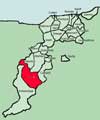 Inveraven Inveraven
 |
| Some
places mentioned in the Inveraven accounts |
OSA
V13, P34 Bridges and Roads. In 1792, General
Grant built a bridge at Ballendalloch, along with a road
which makes travel from the low country to Strathspey
and Badenoch much easier. There is also an old bridge
over the Livet, near the mouth of Tervy.
General Grant also built a road suitable for carts
and carriages about 16 years ago from Inveraven to Morange
and Glenlivet. When it reached the Duke of Gordon's property
it was continued by the statute labour. A bridge was built
over the burn of Tommore which crosses this road but it
was carried away by floods in 1782 which is a great inconvenience
as the burn cannot be crossed when it is high. The Duke
of Gordon also had a carriage road made from Glenrinnas,
through Glenlivet to Tomantoul.
Miscellaneous Observations. Ferries on the Spey
and Aven.
Peat used as fuel.
NSA
Timber is floated down the Spey from the forests of
Abernethy and Rothiemurchus. The Aven is very transparent
and dangerous to strangers fording it as it seems quite
shallow.
The area was a major centre for the distillation and distribution
of illicit whisky although this has changed since distilling
was made legal.
Several mills in the parish.
Parochial Economy.
Market-towns. Markets can be accessed at Tomantoul,
Charleston of Aberlour, Grantown and Dufftown but there
are larger markets at Elgin and Keith, 20 miles away.
Carriers go each week to Elgin. Many supplies for the
lower part of the parish and Glenlivet are had from Aberdeen
by carrier. Dairy produce is taken to Aberdeen by the
same carriers.
Roads. In the lower part of the parish there
is 4 miles of toll-road, continued as a Parliamentary
road for 2 miles beyond the bridge of Aven. Both have
steep stretches. This road is crossed in Glenlivet by
a county road from Dufftown to Tomantoul. Another road
made by two of the heritors runs on the east side of Aven
to Glenlivet and Kirkmichael; and a short road runs on
the west of Aven. There are also a couple of branch roads
from the toll-road to the Spey.
 |
| The old bridge at Bridgend of
Glenlivet. Although its age is not known an information
panel suggests it may have been associated with
nearby Blairfindy castle which dates from the 16th
century. |
Bridges,
Etc. -The old bridge over the Livet, severely
damaged by flooding in 1829, was replaced in 1835. The
bridge at Tomnavoulen was also damaged by the floods
and could only be used by people on foot - it has now
been repaired.
There is a new bridge over the Tommore Burn on the new
Avenside road, and one at Craig-Achrochcan over the
Aven. These were not damaged in 1829.
The nearest bridges over the Spey are 24 miles apart,
at Grantown and Craigellachie with no good fords either
here or in Knockando parish - there is one at Balnellan
but it is very deep. There are two public ferry boats:
at Blacksboat and Balnellan.
There are no public coaches; a few years ago one
between Keith and Grantown went out of business. There
is a post office at Ballindalloch at the Bridge of Aven
that receives mail from Keith and Craigellachie, and
a sub-office at Drumin. A runner goes from there to
Tomintoul. Although it is only 14 miles to Grantown,
letters have to go via Keith, some 70 miles.
Fairs. Four fairs for cattle, horses, grain
etc and for hiring.
Inns, Etc.Two in the parish church district,
9 in Glenlivet which is too many.
Fuel. Excellent and plentiful moss from the
higher part of the parish. Lower down it is of poor
quality and in places worked out - those who can afford
it bring English coal from Garmouth, 30 miles away.

General Observations. Among the improvements
are roads and bridges, and the suppression of smuggling.
Still required are 'bridges over the Tervay, Crombie,
and smaller streams; cross roads in all directions,
and a main one from Tomnavoulen to Achnara, round the
country called Braes of Glenlivet, (which is utterly
destitute of roads,) with a branch from Tomalinan to
Tamintoul, and another, if practicable, to Glenbucket
or Strathdon, - the present thoroughfare to the latter
being only a pass so steep as to have obtained the very
appropriate name of the Ladder (note: from Gaelic leiter,
a slope). The much-talked-of line of road (which is
nearly complete in this parish) from Perth to Elgin
and Forres, with a bridge over the Spey at Tomdow, would
also be highly beneficial to the parish.'
1836
See
the Glenlivet
Estate website for much interesting information.
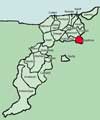 Inverkeithny Inverkeithny
OSA
V11,
P505
Fuel,- As there are hardly any peats locally, they have
to be brought from Foudland in Forgue parish and Auchintoul
in Marnoch parish.. Coal can be had from Banff, 12 miles
distant.
NSA
No mention of roads.
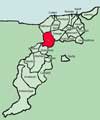 Keith Keith
OSA
V5,
P414
Peat and limestone available locally.
Villages and Markets. -Of the 4 villages here,
the oldest is the Kirk-town of Keith but it is much in
decline. New Keith was founded about 1750 and is now thriving.
It has 4 fairs, one long established that 60 or 70 years
ago was 'the general mart for merchant goods from Aberdeen
to Kirkwall', and is still the busiest market in the north
for black cattle and horses.
Roads, Bridges, and Post-office.-The roads are,
in general, in very bad repair; partly owing to the wetness
and depth of the soil; partly to the injudicious and imperfect
mode of repair, and partly to the statute labour not being
regularly exacted, by which the roads in this corner were
originally made, and which is the only means of their
support.
Within these few years, Lord Findlater's factor in that
district, has exerted himself in a very laudable manner
to remedy that defect, has introduced a more judicious
and perfect mode of repair, and is more regular and strict
in exacting the statute labour; for which, though the
inhabitants in the mean time, murmur a little, he deserves
their best thanks; and were his commendable zeal properly
seconded, by the other heritors and factors, the complaint
of bad roads in Keith would soon be no more heard of.
The parish is tolerably supplied in bridges, mostly new
and in good repair.
The new village has a post-office, serviced by runners
from Fochabers three times a week, which is quite inadequate.
NSA
Parochial Economy. Villages.-Old Keith is a very
ancient place, and, at no very distant period, was celebrated
for an annual market held in September, to which merchants
from Glasgow and the other manufacturing towns in the
south repaired in great numbers, where they met those
from the north, as far as Orkney, and exchanged their
various commodities. So great was the concourse of people
there, that the historian of Moray says, " There
was not accommodation for them, and they occupied the
barns and out-houses in the country for many miles round."
In describing New Keith, established in the 1750's,
he says that it has 3 streets, a weekly market, six annual
markets for cattle, horses and sheep, an inn at which
the Mail and Defiance coaches stop daily, has gas-lighting.
Other populated places are Fife Keith with four annual
cattle markets, and Newmill with one market.
Note: There is a description of the fair in A
survey of the province of Moray, page 300 (Google
Books)
| But this little town, scarcely
covering the extent of 3 acres, was still more distinguished
by the great fair, which was continued for a week
about the middle of September. To it the whole merchants
of Aberdeen, leaving their shops almost empty, with
all their goods repaired, and very little unsold
was carried back. They were transported on horseback,
in packs of sacking, each making one load: no carriage
or carriage road was heard of in the country before
the abolition of the heritable jurisdictions. All
the carriers, and many of the smaller farmers in
the vicinity of Aberdeen, were employed for 10 or
12 days before the market: they travelled in caravans,
from a dozen to 40 together; their approach was
announced with joy, when first descried upon the
brow of the distant hill— " There comes summer eve,
and the foremost troop of the packers." Numbers
of trading people, and manufacturers from Glasgow,
Perth, and Dundee, and from other towns in the south,
were met by all the merchants in the western-Highlands,
and northerly parts of the kingdom, from the distance
even of Kirkwall and the Orkney Isles, for settling
accompts and arranging new commissions. To this
fair also was brought the whole manufacture of coarse
woolen cloths, with all the black cattle and horses,
several thousands of each, from all the country
far and wide around. For cattle and horses, it is
still by much the greatest fair in the north. It
is not now to be conceived in what manner such a
vast concourse of people, and such store of merchant
goods, could have been lodged in such a little place,
where more strangers in black coats from the Highlands
and Islands alone assembled than now make up the
whole market together. Male and female, with such
mutual accommodations as circumstances allowed,
lay together in dozens and scores upon straw, with
blankets, in all the pantries, barns, and kilns
of the town, and of the farms, to the distance of
miles all around :— such was then the simplicity
of manners! |
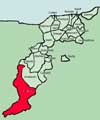 Kirkmichael Kirkmichael
OSA
V12, P425
In the Gaelic, the vernacular idiom, it is called Strath-ath-fhin,
from " Strath," a dale, "ath," a ford,
and " Fin," the hero Fingal, so highly celebrated
in the Poems of Ossian.
In winter the district can almost be cut off by deep
snow.
The writer says that he obtains his peat from a moss
3 miles distant at the end of a bad road, often impassable.
Antiquities, Eminent Men, &c.-It is unlikely
that the Romans were ever here; no remains of any kind
have ever been found nor is there any tradition that they
were here.
In the year 1715, a small fort was erected in the southern
extremity, but soon after, it was abandoned, and now lies
in ruins.*
|
*The
great road that passes through the country, to
facilitate the march of the troops between Perth
and Fort-George, was not made till the year 1754;
and now the stages are so bad, that few travel
it. The roads here, in general, are wretched beyond
description; and yet the people, in terms of the
statute, are annually called out to work at them.
This only can be imputed to their indolence, their
want of the necessary implements, and the ignorance,
or indifference of the persons appointed to superintend
them. No good roads can be expected according
to the present mode of
|
management.
To effect this a commutation is absolutely necessary.
On the river Ath-fhin, there is a bridge, where
it is crossed by the great road. Two other bridges,
one at Delvoran and one at Delnacairn, a little
E. of the kirk, would prove essentially useful,
as they would facilitate the water-course, which
at present is frequently interrupted, and render
the communication safe and commodious. Another
upon Ailnac at Delnabo, and one upon Conlass at
Ruthven, would also be very necessary.
Cattle and sheep driven south; wool sold in Banffshire
and Morayshire.
|
NSA
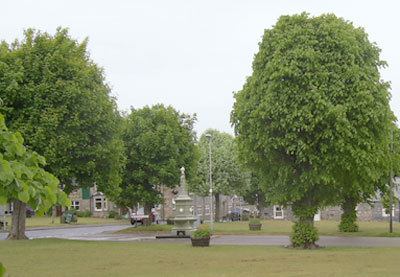 Parochial
Economy. Parochial
Economy.
Village. - Tomintoul is the only village in the parish.
It is situated about five miles south of the parish church.
It was commenced in the year 1750, and now contains a
population of 530. It has five markets held annually in
it. There is no system of police established.
Means of Communication. -Despite its potential
for becoming a major route in the Highlands the parish
is still shut off from surrounding districts, as it was
100 years ago. There are turnpikes a few miles away on
the north and east but they do not run through the parish;
on the south and west the nearest turnpike is 30 miles
away. We have a daily post to Tomintoul, and weekly carriers
to Elgin and Forres. Merchant goods come mostly from Aberdeen.
There are long-standing plans for a road between the
Moray Firth and Perth which would run through this parish
- this would allow easy communication and bring Perth
and Elgin 50 miles closer. There are also plans for a
road between Inverness and Aberdeen that would run across
this parish and cross the other road at Tomintoul - it
would be as short as the one through Keith and Huntly.
Twenty one miles of road between Grantown and Strathdon
remain to be built.
If the first road was built, the distance the mail
has to take to Perth would be 100 miles less, via Braemar.
The Commissioners for making Highland roads and bridges
surveyed the route in 1810 and there were further surveys
in 1832 by the Lord Lieutenant of Morayshire and others,
and in 1839 by the Blairgowrie and bridge of Cally turnpike
trust. The cost of the road is estimated as between L18,000
and L23,100, to be paid for by tolls and subscriptions.
It is unfortunate that the money has not so far been raised.
It would cost only L8200 to open the line for wheeled
carriages between Tomintoul and Castletown of Braemar,
at present the only section unsuitable for carriages.
The benefits would be great and it is hoped that progress
will be made.
Inns. -Six.
Fuel. -Mosspeat.
Miscellaneous Observations. The parish could
be improved by plantations, enclosures and road making
- in the last 10 or 12 years a road has been made along
the Avon, and one by Glenlivat eastward.
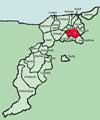 Marnoch Marnoch
OSA
V3, P94
Agricultural produce exported from Banff, Portsoy and
Macduff.
The bridges were built, and are held in repair by the
county, and the roads by the statute labour. There are
about 500 work horses, and about 3000 cattle, in the parish.
Six alehouses.
NSA
Parochial Economy.Markets, Etc.-In the village,
there are regular markets for feeing servants at the terms
of Whitsunday and Martinmas. During the winter, there
is a weekly grain market on Monday, as also an annual
market on the second Tuesday of March, for horses and
cattle, called Marnoch fair.
There are six public houses in the parish, one in the
country, and five in the village,- three too many. There
are a branch of the North of Scotland Bank, and a stamp
office in the village, as also a post-office, and regular
runners every lawful day to Banff and Huntly.
The turnpike between these places runs through the village,
and also the road between Turriff and Portsoy, the village
being almost in the centre between these places, and from
eight to ten miles distant from each.
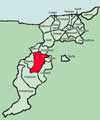 Mortlach Mortlach
OSA
V17,
P413
Mention of the public road leading to Botriphny. No town
or village.
Near the church the foundations of the bishop's palace
can be seen; also nearby, part of the public road is called
Gordon's cross. It may have been a market place or for
some religious purpose but this is not certain.
Timber floated on the Spey.
Roads. - The writer is very critical of the
roads noting how neglected they are, how badly made, and
how overseers, being local are reluctant to impose on
their neighbours. Commutation or turnpikes are needed.
He also notes the wasteful time-consuming efforts needed
to bring in peat and the benefits of coal, especially
if the roads were improved or even a canal made.
Reference to journeys to Keith for the post-office,
shops or the market.
At the end of the account, he discusses the bishopric
that lasted between 1010 and 1139. There were four bishops.
NSA
Parochial Economy.
Village, Etc.-There is no market in Dufftown but
dealers call occasionally for grain. Five cattle markets
are held each year. Keith, 11 miles distant, is the nearest
market town.There is a post at Dufftown which receives
the mail from Craigellachie. There are 6 miles of turnpike
roads that lead to Elgin, Keith and Fochabers. No work
has been done on the roads and bridges over the Dullen
and Fiddich since the floods of 1829.
1836
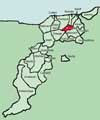 Ordiquhill Ordiquhill
OSA
V6, P348
The only village here is Cornhill - several markets
are held near there in summer.
Improvements. - A bridge is needed on the
Huntly to Portsoy road, over the Boyn. Several people
have drowned including a woman and her horse.
There is one inn. Several hundred cattle, sheep etc are
driven south from here.
NSA
Means of Communication. - Six markets are held
near Corncairn. Eight miles of turnpike road with 4 bridges
on these.
One inn.
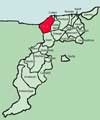 Rathven Rathven
OSA
V13, P392
Cullen is the nearest post-town to the eastern end of
the parish; and Fochabers to the western, from which it
is scarce 4 miles distant.
Details of the extensive fishing trade.
Roads.- The roads are statute labour. The post-road
runs across the parish for 8 miles, the first 5 miles
from Cullen being good, the remainder poor in wet weather.
A new route is planned for part of this road and it is
hoped this will not inconvenience the public.
There is a fine bridge near Cullen House. For three
miles after that the road is too narrow and needs parapets
but passes through well-ordered countryside except for
a moss. There is a bleak stretch of moorland near Rannachie.
There are several quarries in the parish.
Fuel.-Peat or turf has to be brought from a
distance and is very dear and often scarce in winter.
He notes that the tax on coal has now been removed.
NSA
Topographical Appearances - The Benhill (945
feet) is used as a landmark by the fishermen, being visible
for 15 leagues. The Earl of Seafield has made a carriage
road to the top.
Cattle bought by dealers from the south.
Details of trade (salt, coal, grain) carried on through
Port Gordon, Buckie, Porteasy and Findochtie.
Parochial Economy. -Some years ago, two fairs were
annually held in this parish; but now there is only one,
which takes place in the end of July for cattle, sheep,
cheese, &c. At Buckie Burn, there is a post-office,
with a daily delivery. There is no regular market for
butchermeat; but at Buckie, and the other villages, wheaten
bread and groceries can be procured.
Details are given of the fishing trade - there are
five fishing villages.
Means of Communication. -The roads and bridges
are good and well-kept. The post-road passes through for
10 miles and the coach between Elgin and Banff runs on
this road each day.
Since rural police were established, vagrancy is now
under control.
Inns or Alehouses. -Thirty in all, which is
far too many.
Fuel. -Peat or dried turf which is expensive
because of the distance it is brought. Coal is available
at Buckie and Portgordon.
Miscellaneous Observations. -Improvements to
the roads and bridges.
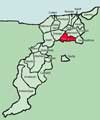 Rothiemay Rothiemay
OSA
V19,
P385
There is a large moss that supplies the parish and
the town of Huntly with peat. Grain is shipped from Portsoy,
Banff and Macduff.
Advantages Etc. To this advantage (peat and lime)
I wish I could add good roads; but the proper method of
making and repairing these is not even understood here.
Instead of using for this purpose that abundance of metal
and gravel which nature has supplied, the statute-labour
is employed in throwing on the middle of the roads the
contents of the ditches on their sides, which, being clay
or soft earth, so far from improving them, (unless, perhaps,
during the heat of summer), generally makes them worse
than before.
Three ferry boats.
NSA
Parochial Economy. -Since the old Account was published,
fifteen miles of commutation roads have been made in the
parish, and that part of the Huntly, Banff, and Portsoy
turnpike which passes through the parish. Were the line
of turnpike from Inverury to Bognie Brae, extended to
the Keith and Banff turnpike, past the Milltown of Rothiemay,
and a bridge built over the Doveran at this village, these
would add much to the improvement of the district, and
to the convenience, comfort, and safety of the lives of
the parishioners of Rothiemay on the south side of the
Doveran, and of others who have occasion to cross the
river in this quarter.
1842
Top
|
